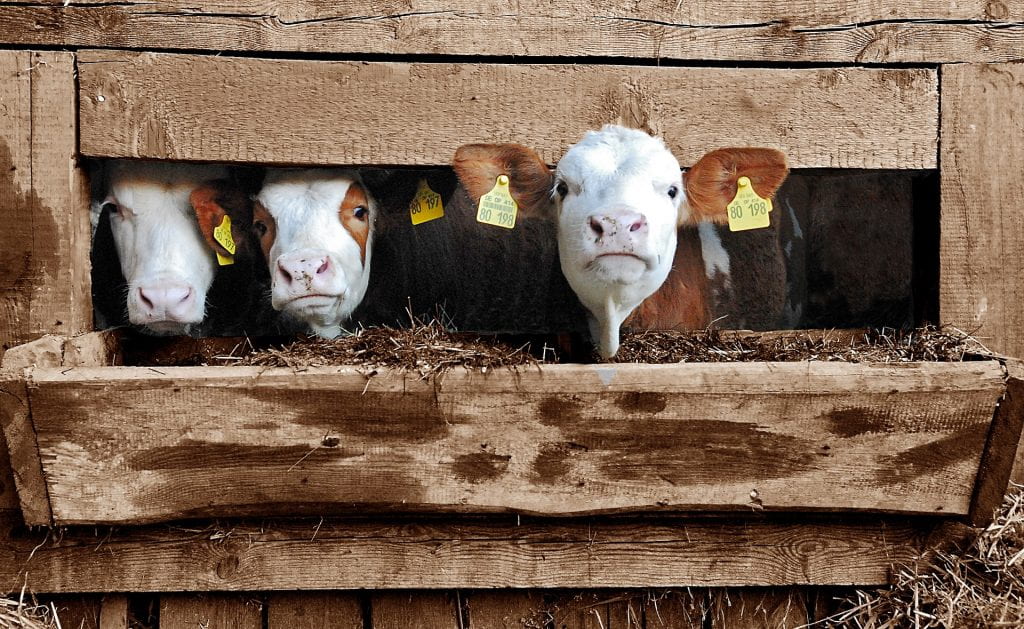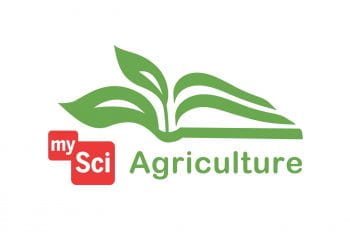
How do plants grow? Where does food come from? Who grows your food?
Agriculture is the No. 1 industry in Missouri. The state is home to 95,000 farms, according to the Missouri Department of Agriculture, covering two-thirds of the state’s total land acreage, with the top commodities being soybeans, corn, cattle, hogs, and turkeys. But despite this rich agricultural tradition, there remains a disconnect for some people about where their food comes from and the role agriculture plays in their lives.
To address this “agricultural illiteracy,” the state legislature approved a bill in 2018 authorizing the Missouri Department of Elementary and Secondary Education (DESE) to establish a pilot program to provide agricultural education in elementary schools, and to determine how to best implement a program statewide.

In partnership with DESE and Vivayic, a company that designs curriculum for agricultural organizations, the Institute for School Partnership (ISP) at Washington University in St. Louis set out to increase the understanding of agriculture in elementary classrooms across the state. The result – mySci Agriculture, hands-on science curriculum adapted from the ISP’s existing and popular mySci science program.
Designed for students in third to fifth grade, the units use agriculture and food production to explain scientific principles. For example, one unit looks at the role bees play in pollination Missouri orchards, while another examines how Missouri farmers manage pests that impact crop and livestock. ISP Executive Director Victoria L. May is excited to make the science behind food and farming relevant to all students.
“Agricultural education isn’t just for rural school kids. All kids need to understand where our food comes from, the people who work to provide it, and what it takes to get it from the farm to the table. It’s not an abstract idea anymore. This curriculum helps bridge the gap between farming and the non-farming public.”
Victoria L. May, ISP Executive Director
“Agricultural education isn’t just for rural school kids,” May said. “All kids need to understand where our food comes from, the people who work to provide it, and what it takes to get it from the farm to the table. It’s not an abstract idea anymore. This curriculum helps bridge the gap between farming and the non-farming public.”
We are so excited for this opportunity
Despite the challenges posed by the COVID-19 pandemic, the three-year pilot project kicked off this fall in 20 schools selected by DESE.
In preparation, ISP instructional specialists Jeanne Norris and Lauren Ashman worked with teachers from across the state to develop ag-themed lessons based on existing mySci units. Participants of the pilot program received the curriculum and instructional materials. Ashman and Norris also met virtually with teachers, offering them strategies to adapt and implement the curriculum in their classrooms.Show less
Lisa Riley, a fourth-grade teacher at Hillcrest STEAM Academy in the Belton School District, about 20 minutes south of Kansas City, gives the PD sessions high marks, saying she felt properly prepared.
“We walked through a grade-level unit lesson as if we were the student,” Riley said. “This was very helpful to see the lessons from a student’s point of view. We also had really good conversations throughout the lesson and were given immediate feedback.”
Reflecting on her work developing the mySci ag pilot, Norris said she’s thrilled to build on the successful model of the mySci program and share this resource with teachers and students across the state.
“It is my hope that our comprehensive approach of providing curriculum, PD, kits of materials, and teacher leadership and collaboration opportunities, makes teaching and learning science and agricultural literacy engaging and approachable.”
I am pretty proud of what we are doing here
“Being part of this pilot is a big deal for us!,” said Hope Sickmeier, garden education teacher at Southern Boone County Primary/Elementary, located in north-central Missouri. “We are so excited for this opportunity!”
Sickmeier was among the educators who testified in favor of the ag program. So when her school was elected as a pilot site, she was elated.
Sickmeier says she likes the real-world applications of the program. Her students are making the connections – understanding the cycle of how one thing leads to another in order to feed people.
“We have a lot of a-ha moments,” Sickmeier said. “They are so interested in what they can grow and what we are growing out here and the different ways to preserve the food. It’s incredibly interesting to them. I am pretty proud of what we are doing here!”
Dana Freymuth, a fifth-grade teacher at William Cappel Elementary in the Lincoln County School District, which is about an hour northwest of St. Louis, comes from a farming family and knows the importance of connecting food, farming, and education. She thinks it’s important for students to know that there is more to their favorite pizza than delivery or the frozen food aisle of their grocery store.
Freymuth asks her students: “Whatever you favorite pizza is, how did that come to be? And don’t tell me the frozen section of the grocery store or that you call and get it delivered. Think about where these pieces come from, especially where we are at.”
Meanwhile students in Riley’s classroom Hillcrest STEAM Academy are more aware of agriculture’s role in their local community. Though the pandemic has affected how Riley normally shares materials, her students have still been able to conduct experiments such a “mystery box” model that illustrates how our eyes need light in order to see objects and an experiment to see what type of environment mealworms prefer in terms of amount of light, food, and moisture. After, the students designed the ideal mealworm habitat based on their findings.
“The students loved piloting the curriculum,” Riley said. “All of the resources were wonderful and engaging. I was excited to be able to try something new and enriching.”
____________________________________________________
List of Missouri Schools Piloting mySci Ag Curriculum
- Belton—Hillcrest STEAM Academy
- Malta Bend—Malta Bend Elementary
- Scuola Vita Nuova Charter (KC)
- Moniteau Co R-1—California Elementary
- Troy—Main Street/Hawk Point/William R. Cappel Elementary
- Macon R-1—Macon Elementary
- Southern Boone Co R-1—Southern Boone Co Elementary
- Newtown-Harris—Newtown-Harris Elementary
- Norborne—Norborne Elementary
- Trenton—Pleasant View R-VI
- Dunklin R-5—Pevely Elementary
- Maries Co. R-II—Belle Elementary
- St. Louis Public Schools—Mullanphy Elementary
- Bismarck R-5—Bismarck Elementary
- Hayti R2—Wallace Elementary
- Sainte Genevieve RII—Ste. Genevieve Elementary
- Marionville R-9—Marionville Elementary
- Marshfield—Webster/Shook Elementary
- Nixa—John Thomas School of Discovery
- Springfield—Sherwood Elementary
Media Contact: Myra Lopez